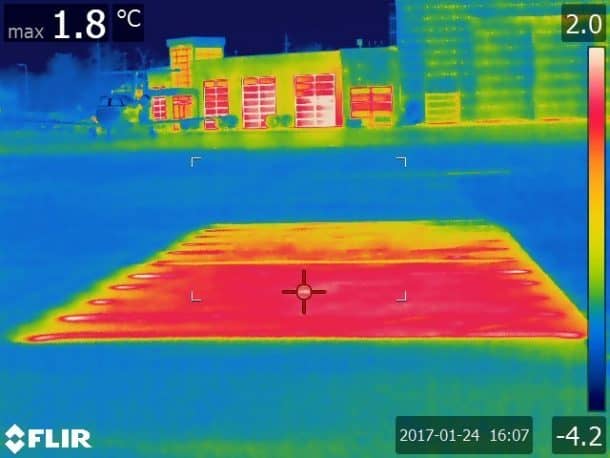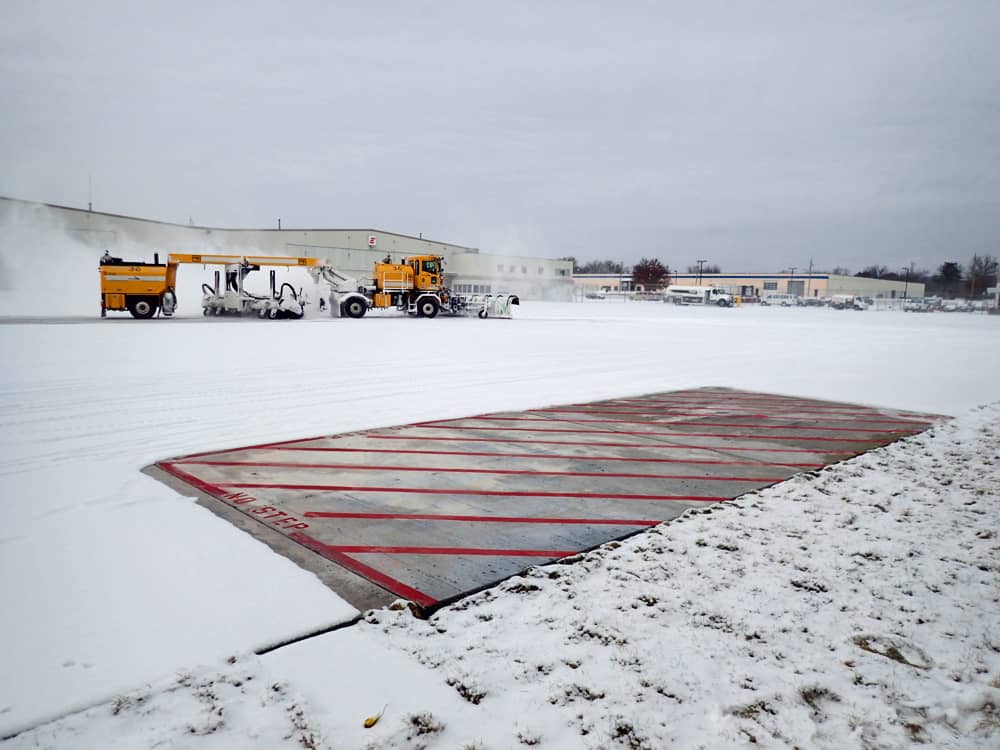On an icy cold morning, the biggest torture is getting rid of the frost on your car. If you are lucky enough to get that done in time, it is even crazier to drive on the icy slippery roads. the situation is even worse for airplanes. The airplane wings are kept ice free for a safer flight but for a safer landing, the airport ground needs to be ice free as well.
A team of researchers led by Prof. Halil Ceylan at the Iowa State University has developed a type of electrified concrete that conducts electricity to help melt ice and snow. Des Moines International airport is currently testing the concrete. The testbed is made with two 7.5 inches thick adjacent slabs of concrete measuring 15 x 13.5 feet. Each slab is double layered, where the lower 4-inch layer is made of regular concrete and the top 3.5 inches are made with a special mix of cement, sand, and rocks containing 1 percent carbon fiber. Between the two layers of concrete, lie six electrodes wired to the supply from the hangar.

Source: Iowa State University
The electrodes can be powered up remotely with an app to send up an electric current through the upper layer of the concrete slab. The electrical conductivity of the carbon fiber lets the current travel through the slab while providing enough resistance to generate heat. As a result, the concrete becomes hot melting away the ice at the surface. The heating is just enough to melt the ice while keeping the surface safe to touch. The team is planning to add a layer of hydrophobic material that will repel moisture.
The electrified concrete slab only uses 333 watts of power per square meter while warming the concrete for 7 hours. This amounts to an operating cost of 19 cents per square meter. The installation of the electrified concrete seems to be an addition to the overall costs but in reality, it will eliminate the costs incurred by the plows and de-icing chemicals and the treatment of the waste water thus created. The concrete could be used for the sidewalks outside airports and more so on the airport aprons, where using plows is difficult due to the continuous traffic.
A different type of ice melting concrete has also been developed the University of Nebraska-Lincoln that uses steel shavings and carbon particles for conducting electricity. Both the developments are a part of a program run by the Federal Aviation Administration (FAA).


